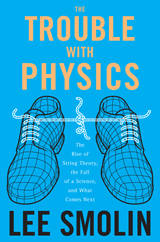 Source of book image: http://www.houghtonmifflinbooks.com/catalog/titledetail.cfm?titleNumber=689539
Source of book image: http://www.houghtonmifflinbooks.com/catalog/titledetail.cfm?titleNumber=689539
Physicists rightly feel uneasy about descriptions of the physical world that divide it into discrete clusters of equations and axioms, each cluster explaining one part of existence but not another. Better would be finding a Theory of Everything capable of conjoining, in a few equations, planet-pulling gravitation and the microcosmic weirdness that goes on in the quantum world of atoms and particles. Physicists would like to stitch time and space together as well.
Einstein tried and failed. In recent years, "string theory" has been the favored means of attempting to tie everything together, but it has unraveled into mathematical frippery, positing ever more intricate elaborations extending into anywhere from 10 to 26 dimensions, some arising from themselves, some hidden in ways so baroquely scrolled that you can get a migraine just thinking about thinking about them. Little wonder that, as an experimental science, string theory seems to have nowhere to go.
That is the problem that Lee Smolin identifies in "The Trouble With Physics." He laments a kind of sociological imperative drawing the best minds into a whirlpool of mathematical solipsism.
For the full review, see:
The reference to the book under review, is:
Lee Smolin. The Trouble With Physics: The Rise of String Theory, the Fall of a Science, and What Comes Next. Houghton Mifflin, 2006. (392 pages, $26)
